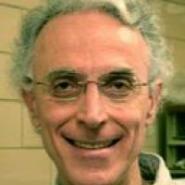非常抱歉,
你要访问的页面不存在,
非常抱歉,
你要访问的页面不存在,
非常抱歉,
你要访问的页面不存在,
验证码:

职称:Associate Professor of the Practice of Biology
所属学校:Duke University
所属院系:BIOLOGY
所属专业:Biology/Biological Sciences, General
联系方式:(919) 660-7326
My research centers on the developmental and molecular biology of lichens, well differentiated symbioses between two or three evolutionarily unrelated organisms: specialized fungi on the one hand and algae or cyanobacteria on the other. The 13,500 known lichen species represent 50% of all known ascomycete fungi, are widespread throughout most terrestrial ecosystems, and often tolerate extreme temperatures and dryness. The photosynthetic partner is known to fix the carbon (and the nitrogen when cyanobacteria are involved) necessary for the survival of both symbionts. Lichen fungi and algae can be cultured separately, in an undifferentiated state. However, the in vitro reconstitution of a differentiated lichen from the isolated symbionts is still more of an art than a science. We use as model system the lichen Cladonia grayi and its isolated symbionts. One track is the genomic analysis of C. grayi. Another track involves the study of depsides, depsidones and dibenzofurans, a unique polyketide class of secondary metabolites produced by lichen fungi and probably central to the symbiosis. A third track seeks to develop an in vitro model for the lichenization process, using axenically cultured symbiotic partners.
My research centers on the developmental and molecular biology of lichens, well differentiated symbioses between two or three evolutionarily unrelated organisms: specialized fungi on the one hand and algae or cyanobacteria on the other. The 13,500 known lichen species represent 50% of all known ascomycete fungi, are widespread throughout most terrestrial ecosystems, and often tolerate extreme temperatures and dryness. The photosynthetic partner is known to fix the carbon (and the nitrogen when cyanobacteria are involved) necessary for the survival of both symbionts. Lichen fungi and algae can be cultured separately, in an undifferentiated state. However, the in vitro reconstitution of a differentiated lichen from the isolated symbionts is still more of an art than a science. We use as model system the lichen Cladonia grayi and its isolated symbionts. One track is the genomic analysis of C. grayi. Another track involves the study of depsides, depsidones and dibenzofurans, a unique polyketide class of secondary metabolites produced by lichen fungi and probably central to the symbiosis. A third track seeks to develop an in vitro model for the lichenization process, using axenically cultured symbiotic partners.